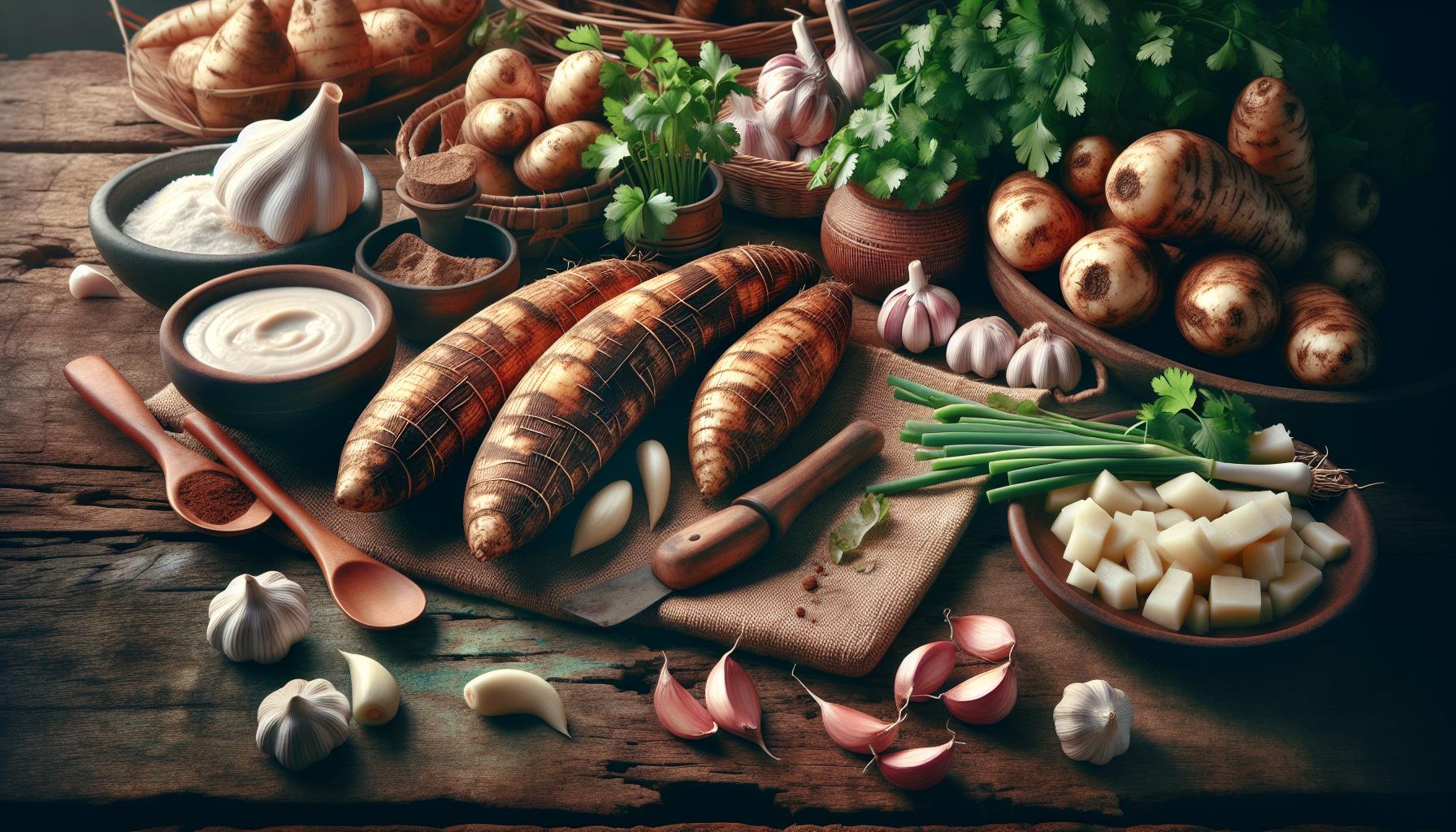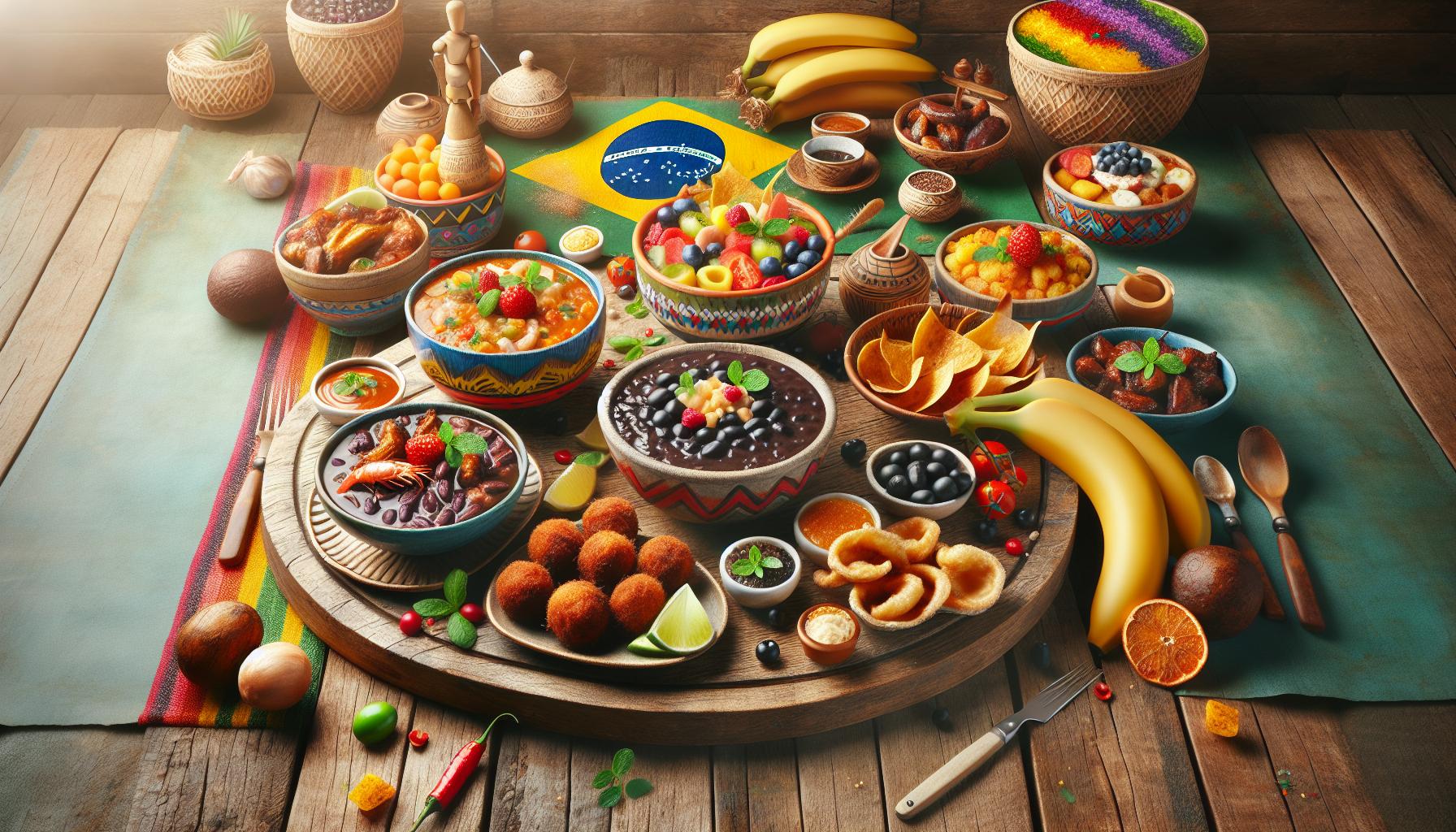Brazilian cuisine tells a vibrant story of cultural fusion where Portuguese, African and indigenous influences collide in a spectacular display of flavors and traditions. From the steamy streets of Salvador to the bustling markets of São Paulo, the country’s food culture reflects its rich history and diverse population.
The heart of Brazilian cooking beats in every home kitchen where recipes passed down through generations come to life. Traditional dishes like feijoada, a hearty black bean stew, and pão de queijo, those irresistible cheese bread balls, aren’t just meals – they’re celebrations of Brazil’s culinary heritage. It’s where family gatherings transform into feasts and where the simple act of sharing food becomes an expression of love and community.
Traditional Brazil Food Culture
Brazilian cuisine evolved through centuries of cultural mixing, creating a unique culinary identity that reflects the nation’s diverse heritage.
Indigenous and European Influences
Native Brazilian tribes contributed fundamental ingredients like manioc cassava root mandioca açaí berries palm hearts to modern Brazilian cooking. Portuguese colonizers introduced cattle farming rice sugarcane cultivation olive oil cod fish in the 16th century. The indigenous cooking methods combined with Portuguese techniques created signature dishes like moqueca (fish stew) farofa (toasted manioc flour) pão de queijo (cheese bread). Local tribes taught settlers sustainable farming practices gathering wild fruits hunting techniques that shaped Brazil’s agricultural landscape.
African and European Impact
African slaves brought palm oil dendê okra black-eyed peas coconut milk to Brazilian kitchens during the colonial period. These ingredients transformed local recipes creating distinctive dishes like acarajé vatapá caruru. European immigrants from Italy Germany Spain Poland arrived in the 19th century adding pasta polenta sausages breads to Brazil’s culinary repertoire. The fusion of African cooking methods European baking techniques indigenous ingredients established regional specialties like feijoada (black bean stew) coxinha (chicken croquettes) brigadeiros (chocolate truffles). This cultural exchange created Brazil’s modern food identity marked by rich flavors diverse textures innovative combinations.
Essential Ingredients in Brazilian Cooking

Brazilian cuisine relies on a core set of indigenous ingredients combined with Portuguese, African, and European influences. These foundational elements create the distinctive flavors found in traditional Brazilian dishes.
Manioc and Its Many Forms
Manioc (cassava) stands as Brazil’s most versatile native ingredient, appearing in numerous traditional preparations. The root transforms into tapioca flour for cheese bread (pão de queijo), coarse meal for farofa, or fine flour for thickening stews. Fresh manioc creates hearty side dishes when boiled or fried, while fermented manioc produces tucupi sauce for duck dishes. Processing manioc yields additional products like polvilho azedo (sour starch) for Brazilian cheese rolls and goma for tapioca crepes.
- Garlic cloves for moqueca base
- Green onions for rice seasoning
- Fresh cilantro for bean dishes
- White onions for refogado (sautéed base)
- Fresh parsley for meat marinades
Popular Traditional Brazilian Dishes

Brazilian cuisine features distinctive dishes that showcase the country’s diverse culinary heritage through unique combinations of indigenous ingredients African cooking methods Portuguese techniques.
Feijoada: The National Dish
Feijoada embodies Brazil’s cultural fusion in a hearty black bean stew. This iconic dish combines various cuts of pork including sausage bacon dried meat with black beans garlic onions bay leaves. Served with white rice farofa (toasted manioc flour) sautéed collard greens orange slices, feijoada represents a complete Brazilian meal. Traditional preparation takes 12-24 hours as the beans slowly cook with the meat creating deep rich flavors. Restaurants typically serve feijoada on Wednesdays Saturdays making it a cherished social dining experience.
Regional Specialties
Brazil’s vast geography produces distinct regional dishes that reflect local ingredients cultural influences. The North features açaí bowls tacacá (spicy soup) pato no tucupi (duck in manioc sauce). The Northeast specializes in acarajé (black-eyed pea fritters) vatapá (creamy seafood stew) moqueca (fish stew). São Paulo’s cuisine includes virado à paulista (beans with eggs pork) pasta dishes from Italian immigrants. The South embraces churrasco (Brazilian barbecue) influenced by gaucho culture. Minas Gerais contributes pão de queijo (cheese bread) frango com quiabo (chicken with okra).
| Region | Signature Dishes |
|---|---|
| North | Açaí, Tacacá, Pato no Tucupi |
| Northeast | Acarajé, Vatapá, Moqueca |
| São Paulo | Virado à Paulista, Italian Pasta |
| South | Churrasco |
| Minas Gerais | Pão de Queijo, Frango com Quiabo |
Brazilian Cooking Methods and Techniques

Brazilian culinary techniques blend indigenous traditions with Portuguese influences to create distinct cooking methods. These techniques emphasize slow cooking methods that preserve flavors while incorporating local ingredients.
Traditional Clay Pot Cooking
Traditional clay pot cooking forms the backbone of Brazilian cuisine. Clay pots, called “panelas de barro,” distribute heat evenly throughout dishes like moqueca and feijão. The porous nature of clay enhances flavors by allowing moisture to circulate while retaining essential nutrients. Artisans handcraft these pots using ancient techniques passed down through generations, particularly in regions like Espírito Santo where they receive a special coating of mangrove tree sap. The cooking process in clay pots takes 30-45% longer than metal containers but produces more flavorful results. Popular clay pot dishes include bobó de camarão (shrimp stew), feijoada, and vatapá.
Churrasco Grilling Culture
Churrasco represents Brazil’s distinctive grilling tradition, originating from the southern Gaucho culture. Grill masters called “churrasqueiros” use metal skewers to cook various cuts of meat over open flames or charcoal. The preparation involves minimal seasoning, typically using only coarse salt to enhance the meat’s natural flavors. Traditional churrasco features specific cuts like picanha (top sirloin cap), fraldinha (flank steak) and linguiça (Brazilian sausage). The meat rotates continuously on skewers for 1-2 hours, allowing fat to baste the meat naturally. Churrascarias (Brazilian steakhouses) serve meat directly from the skewers to diners’ plates, creating an interactive dining experience.
The Social Aspect of Brazilian Food
Brazilian food culture centers on communal dining experiences where meals serve as social gatherings that strengthen family bonds and community connections. The act of sharing food creates lasting memories and maintains cultural traditions across generations.
Family Gatherings and Food Customs
Brazilian families gather for weekend lunches that extend for 3-4 hours, treating each meal as a celebration. Children learn cooking techniques at home through observation and participation, with recipes passed down through generations. Lunch remains the main family meal, starting at 12 PM and featuring multiple courses served family-style. Extended family members contribute signature dishes to these gatherings, from homemade pão de queijo to traditional feijoada. Sunday lunches often include three generations sharing stories around the table while enjoying slow-cooked dishes prepared with family recipes.
Festival Foods and Celebrations
Brazilian festivals showcase specific dishes tied to cultural celebrations throughout the year. Festa Junina features quentão (spiced wine) pamonha (corn paste) canjica (sweet corn pudding). Carnival celebrations incorporate acarajé street food vendors serving traditional Bahian fare. Easter brings bacalhau dishes to Catholic families tables while New Year’s celebrations feature lentil dishes for prosperity. The São João Festival includes homemade corn-based treats like curau pé de moleque milho cozido. Regional festivals celebrate local ingredients: açaí festivals in Pará pinhão festivals in Paraná grape harvest festivals in Rio Grande do Sul. Each celebration connects communities through shared culinary traditions unique to specific regions cultural groups.
Modern Influences on Traditional Brazilian Cuisine
Brazilian cuisine continues to evolve through globalization while maintaining its cultural roots. International culinary trends blend with traditional cooking methods creating innovative interpretations of classic dishes.
Fusion Trends and Global Impact
Contemporary Brazilian chefs incorporate international techniques into traditional recipes, creating distinctive fusion dishes. Japanese-Brazilian restaurants combine sushi-making techniques with tropical ingredients, resulting in unique rolls featuring hearts of palm mango. Mexican-inspired taquerias in São Paulo serve tacos filled with feijoada ingredients topped with Brazilian hot sauces. European cooking methods enhance traditional Brazilian ingredients, as seen in dishes like risotto de açaí served in high-end restaurants. International food delivery apps expose Brazilian diners to global cuisines, inspiring home cooks to experiment with fusion recipes. Social media platforms showcase Brazilian food influencers combining local ingredients with international cooking styles.
Preserving Cultural Food Heritage
Brazilian food preservation initiatives document traditional recipes across different regions. Local cooking schools teach indigenous preparation methods to new generations, ensuring the survival of ancient techniques. Government programs support small-scale farmers who cultivate native ingredients like pupunha palm hearts mangarito root. Cultural centers host weekly cooking demonstrations featuring elderly community members sharing family recipes. Digital archives preserve cooking techniques through video documentation of traditional preparation methods. Food festivals celebrate regional specialties, connecting urban populations with rural cooking traditions. Indigenous communities maintain seed banks of native ingredients, protecting Brazil’s agricultural heritage. Restaurant certifications recognize establishments serving authentic regional dishes prepared using traditional methods.

